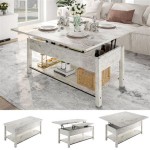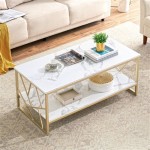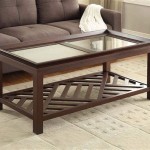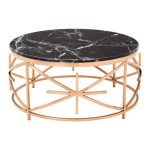Coffee Table Size Relative to Sofa: A Comprehensive Guide
Selecting a coffee table that complements a sofa requires careful consideration of several factors. The dimensions of the coffee table, particularly its length, width, and height, must harmonize with the sofa's size and overall room layout. A disproportionate coffee table can disrupt the aesthetic balance of a living space, impacting both functionality and visual appeal. This article delves into the key considerations for determining the appropriate coffee table size relative to a sofa, providing a detailed guide for interior design enthusiasts and professionals alike.
The relationship between a coffee table and a sofa extends beyond mere aesthetics. A well-chosen coffee table serves as a functional centerpiece, providing a surface for beverages, books, remote controls, and decorative items. It also contributes to the overall flow of the room, facilitating comfortable conversation and movement. Conversely, a poorly sized coffee table can obstruct pathways, create awkward spaces, and hinder the intended use of the living area.
Therefore, understanding the principles of proportion and scale is crucial when selecting a coffee table. These principles dictate that the sizes of furniture pieces should be visually balanced, creating a sense of harmony and order. Applying these principles to the coffee table and sofa relationship ensures that the two pieces work together to enhance the room's ambiance and functionality.
Sofa Length and Coffee Table Length
The length of the sofa is perhaps the most important factor to consider when determining the appropriate length of the coffee table. A general rule of thumb is that the coffee table should be approximately two-thirds to three-quarters the length of the sofa. This proportion creates a visually balanced relationship between the two pieces. For example, if a sofa is 84 inches long, the coffee table should ideally be between 56 and 63 inches long.
This guideline is not absolute and can be adjusted based on personal preference and the specific characteristics of the sofa and coffee table. A longer coffee table can be appropriate for a sectional sofa or a sofa with a particularly deep seat. Conversely, a shorter coffee table might be preferred for a smaller sofa or in a room where space is limited. The goal is to create a visual balance that feels comfortable and proportional.
The style of the sofa also influences the coffee table length. A more formal and traditional sofa might benefit from a slightly longer coffee table to enhance its grandeur. A more modern and minimalist sofa might pair well with a shorter coffee table to maintain a clean and uncluttered aesthetic. The overall design intent of the room should guide the final decision.
Beyond the length, consider the shape of the coffee table. Rectangular coffee tables are generally well-suited for sofas with a linear design. Round or oval coffee tables can soften the lines of a sofa and create a more inviting seating arrangement. Square coffee tables can work well with smaller sofas or in square rooms, providing a sense of symmetry and balance.
When measuring the sofa, it is important to consider the overall length, including the arms. The coffee table length should be proportional to the entire sofa, not just the seating area. This ensures that the coffee table visually anchors the sofa in the room and creates a cohesive design.
The distance between the sofa and the coffee table is another critical aspect to consider. Ideally, there should be approximately 14 to 18 inches of space between the sofa and the coffee table. This allows for comfortable legroom and easy access to the coffee table. Too little space can make the room feel crowded, while too much space can disrupt the flow of conversation and make it difficult to reach the coffee table.
Sofa Height and Coffee Table Height
The height of the coffee table is another essential consideration. A general rule of thumb is that the coffee table should be approximately the same height as the sofa seat. This creates a comfortable and functional surface for placing drinks, books, and other items. A coffee table that is too low can be awkward to use, while a coffee table that is too high can obstruct the view and create an imbalance in the room.
Ideally, the coffee table should be no more than 1-2 inches lower or higher than the sofa seat. This range provides a comfortable and accessible surface for most users. However, personal preference and specific needs can influence the optimal height. For example, if the coffee table is primarily used for dining or working, a slightly higher height might be preferred.
To determine the appropriate coffee table height, measure the height of the sofa seat from the floor. Use this measurement as a starting point when searching for a coffee table. Note that different sofa styles have different seat heights, so it is important to measure the specific sofa that will be used in the room.
The style of the coffee table can also influence the perceived height. A coffee table with a thick tabletop or a substantial base might appear taller than a coffee table with a thin tabletop or a minimalist frame. Consider the visual weight of the coffee table when assessing its height relative to the sofa.
In cases where the sofa has a particularly high seat, a coffee table with adjustable height may be a viable option. Adjustable coffee tables allow the user to customize the height to suit their specific needs and preferences. This can be particularly useful in rooms with multiple seating arrangements or for users with varying heights.
The function of the coffee table should also inform the height selection. If the coffee table is primarily used for decorative purposes, the height is less critical than if it is used for functional tasks such as eating or working. In such cases, prioritize aesthetics over strict adherence to the height guidelines.
Room Size and Coffee Table Size
The overall size of the room plays a significant role in determining the appropriate size of the coffee table. A large room can accommodate a larger coffee table without feeling overcrowded. Conversely, a small room requires a smaller coffee table to maintain a sense of openness and flow. The coffee table should be proportional to the room's dimensions to avoid disrupting the overall balance.
In a small room, consider a coffee table with a smaller footprint or a more streamlined design. A round or oval coffee table can be particularly effective in small spaces, as it eliminates sharp corners and allows for easier movement around the room. A nesting coffee table set is also a good option, as it provides flexibility and can be easily adjusted to suit the needs of the space.
In a large room, a larger coffee table can serve as a focal point and anchor the seating area. A rectangular or square coffee table can work well in a large room, providing ample surface space for drinks, books, and decorative items. Consider adding storage features to the coffee table, such as drawers or shelves, to maximize its functionality in a larger space.
The placement of other furniture pieces in the room also influences the optimal coffee table size. The coffee table should be positioned in a way that allows for comfortable access to all seating areas. Ensure that there is adequate space between the coffee table and other furniture pieces, such as chairs, side tables, and entertainment centers.
The style of the room should also be considered. A more formal and traditional room might benefit from a larger, more substantial coffee table. A more modern and minimalist room might be better suited for a smaller, more streamlined coffee table. The coffee table should complement the overall aesthetic of the room and enhance its visual appeal.
Before making a final decision, it is helpful to measure the room and sketch out a floor plan. This allows for a visual representation of the space and helps to determine the optimal size and placement of the coffee table. Consider using furniture planning software or online tools to create a more accurate and detailed floor plan.
Ultimately, the ideal coffee table size is a matter of personal preference and the specific needs of the room. The guidelines provided in this article serve as a starting point for making informed decisions. By carefully considering the sofa length and height, the room size, and the overall style of the space, a coffee table can be selected that perfectly complements the sofa and enhances the functionality and aesthetic appeal of the living area.

How To Choose The Right Size Shape Coffee Table For Your Living Space

Coffee Table Dimension Guide Ashley Home

The Ultimate Coffee Table Size Guide Apt2b

How To Buy A Coffee Table Living Spaces

The Ultimate Coffee Table Size Guide Apt2b

Rules For Picking A Coffee Table 105 Of Our Favorites Every Space Emily Henderson Living Room Furniture Layout Decor Livingroom

How To Buy A Coffee Table Living Spaces

Coffee Table Singapore How To Choose The Best

How To Choose The Right Size Shape Coffee Table For Your Living Space

The Ultimate Coffee Table Size Guide Apt2b







